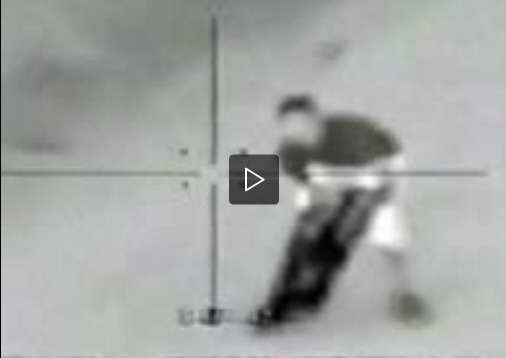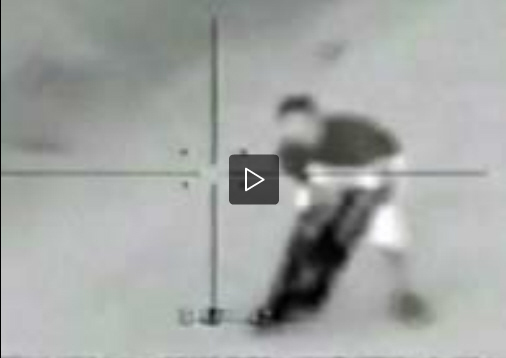The following screenshot is taken from a video released by the Israel Defense Forces (IDF) and shows a man (belonging to a rocket launching group) about to be shot in his face by a “Tamuz”, a previously classified missile used in the Second Lebanon War and during Operation Cast Lead in Gaza.
The Tamuz missile has a range of up to 25 kilometers, can penetrate armored vehicles and is equipped with an electro-optic sensor that allows its ground operators to change its course by watching the target through the missile’s camera.
This kind of weapon was developed as an anti-tank missile then, when the kind of threat faced by the IDF changed in nature, it was made more suitable for strikes againsts smaller targets. It was fitted with a new warhead with reduced explosive material and used against Hezbollah in sothern Lebanon and against Qassam squads in the Gaza Strip.
Tamuz missiles can be directed using information provided by a wide array of “sensors”, including helicopters, planes and UAS (Unmanned Aerial Systems), like the Elbit Hermes 450 and Skyraider (a mini-UAV), used by the artilley corps.
The following video gives an idea of how the Tamuz missile seems to operate when it is fired towards a target: it initially climbs to an altitude that give its camera a good point of view of the presumed target area; then it moves (slowly) towards the target area (it seems to hover) and, as soon as a positive identification is obtained, it is guided to hit the target (in this case a building from where a rocket was launched).
[youtube=http://www.youtube.com/watch?v=ZpD2Rb4i3a8]
Image definition is high and speed slow enough that, as the above video and screenshot show, the Tamuz operator can decide to aim at a single man and literally “look the enemy in the eye”….










